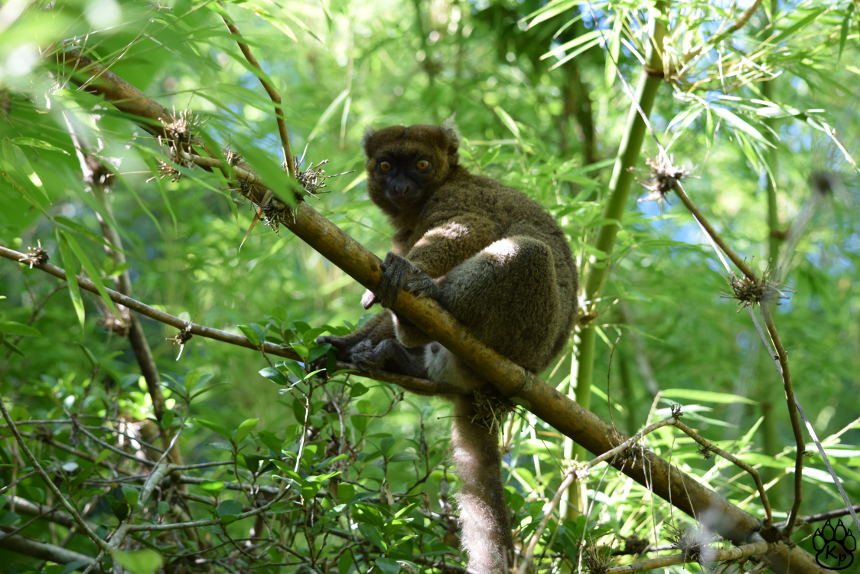
Our work day in the field starts when we reach Kianjavato with all the equipment and meet our guides. We buy snacks for the day and cross the river over a wooden bridge to enter the study area, the forest covering Sangasanga mountain. This area is privately owned by FOFIFA, it is a wild coffee plantation. In the 12 hectares of land you can find forest trees, bamboo coverage and 44 species of wild coffee.
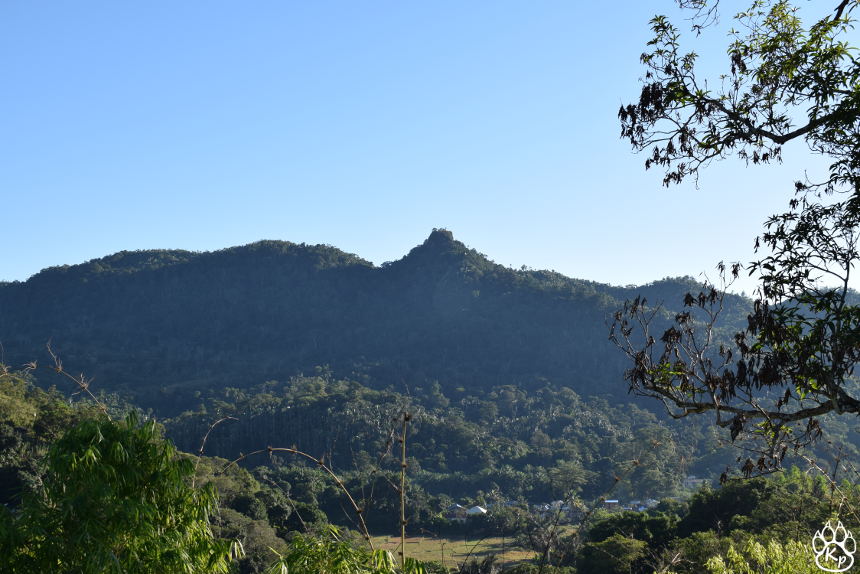
At this point me and my project partner Emma split up, one of us with two guides goes East and the other with three guides goes West. In Sangasanga there are 5 Prolemur simus groups, named after the location of their territory: West, Northwest 1, Northwest 2, East 1 and East 2. Each day we follow three individuals in two different groups. After deciding who goes where, the guides pull out the ATS equipment and antenna that will bip our way towards the group we want to find. As greater bamboo lemurs are a male dominant species, the dominant male in each group has a radio collar to allow us to find the whole group. These collars emit a bipping sound on a specific frequency, when you set the ATS on that frequency and point the antenna in the right direction, you will be able to hear the bip, the closer you are, the louder it is.
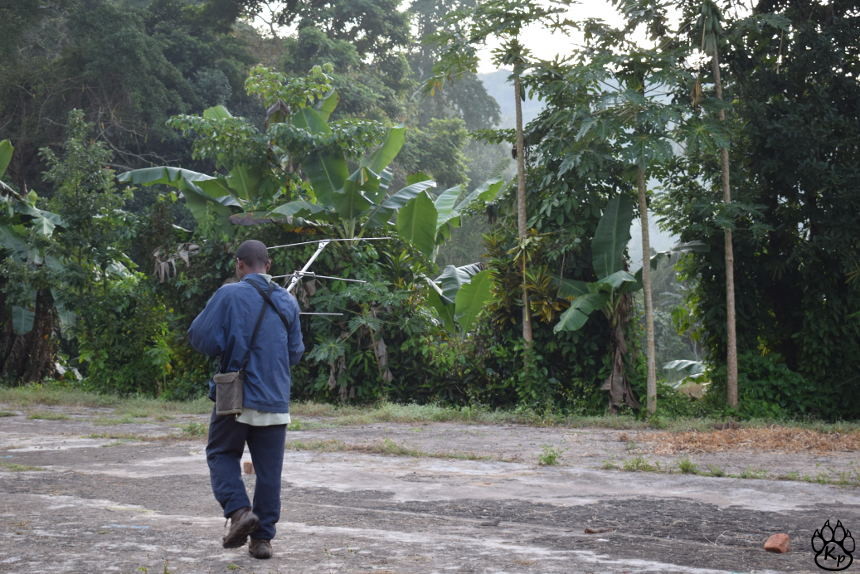
And off we go into the forest, following the bipping man with the six pointed antenna, through wide walked paths or through overgrown vegetation, until we find who we are looking for: a 40cm long brown furred lemur, with whitish fluff over the tiny ears, a tail longer than the body, and hands and feet adapted to arboreal life, with a large and flat thumb, shaped to grab the round branches and close around them.
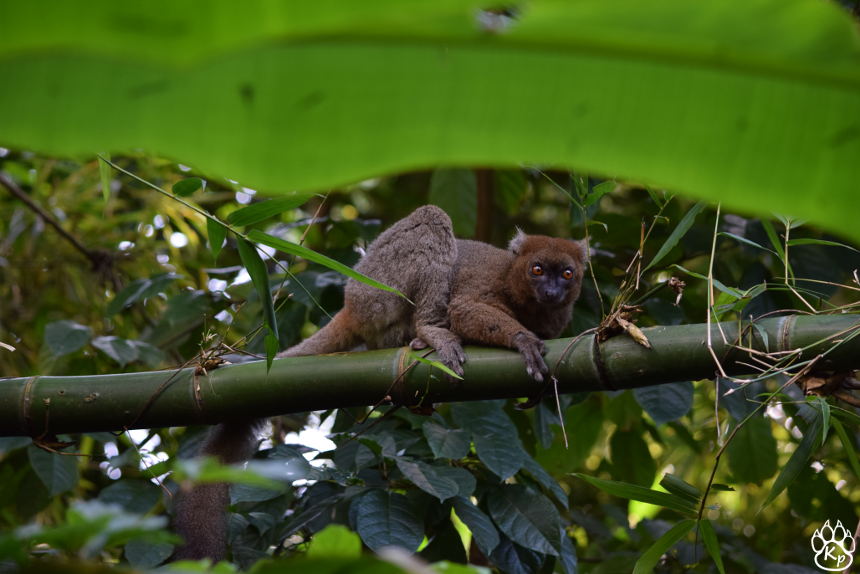
After finding the dominant male, on a sunny day it doesn’t take long to spot the other animals scattered around, females cuddling their babies, juveniles being groomed by their mums, or other adults, males and females feeding or resting in the branches.
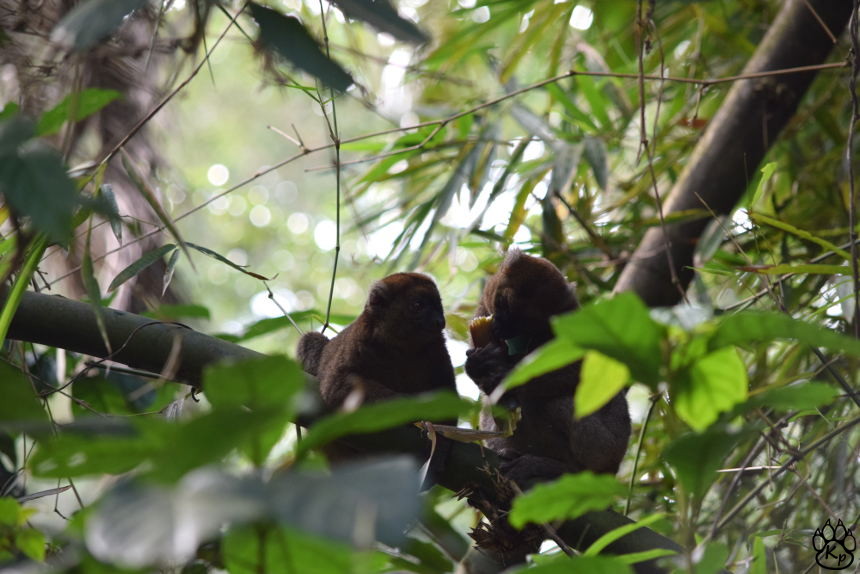
This is when the real work begins: in each group there are 4 to 6 individuals which we do behavioural follows on. These consist in observing the same animal for 2 hours and take 5 minutes point sampling, or in less sciency words, every 5 minutes for 2 hours we write down what that individual is doing, if it’s resting, interacting, feeding, or any behaviour in between. Each day we do behavioural follows on three individuals from the same group, and in the following days we keep following that group until we have three samples for each one.
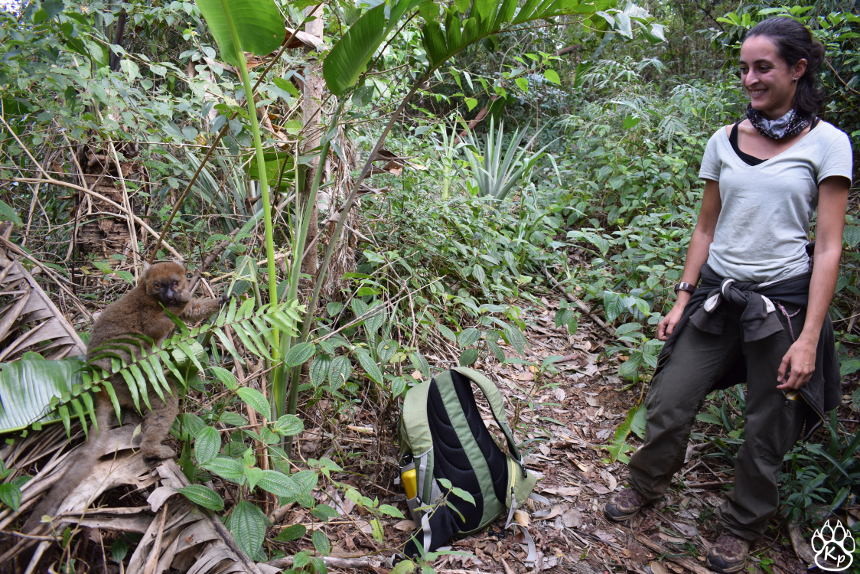
The problem here is that all greater bamboo lemurs look the same! But if you look carefully at our female animals you will see pink bones, green circles, black stars, red fire hydrants and other colorful pendants around their necks. This allows us to know exactly who is who while we observe them for the behavioural study. Males are less fashionable, their collars don’t have pendants, but the ATS frequency allows us to distinguish them.
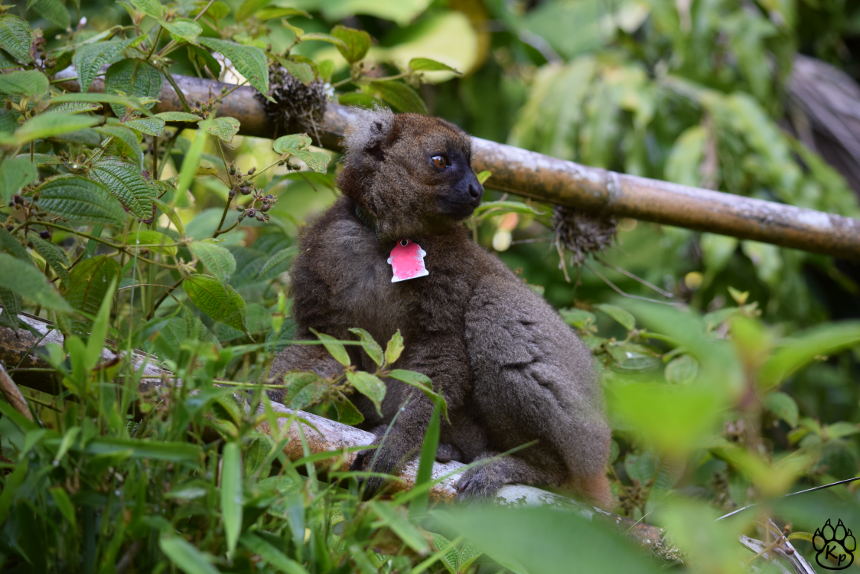
We spend the morning following our animals, sometimes sitting comfortably in a patch of grass and sometimes hiking up and down the hills. After finishing the three samples of the day, it’s time to go back to KAFS for lunch. And in the afternoon we will transfer data on a computer file, ready to be sent to the research supervisors with the biweekly report.
My goodness this job of yours sounds like a dream come true! What amazing fun!
It is amazing here! Both the field job and the people we work with here in Madagascar are great. And the opportunity to immerse yourself in a new culture like this is great, three months are not enough!